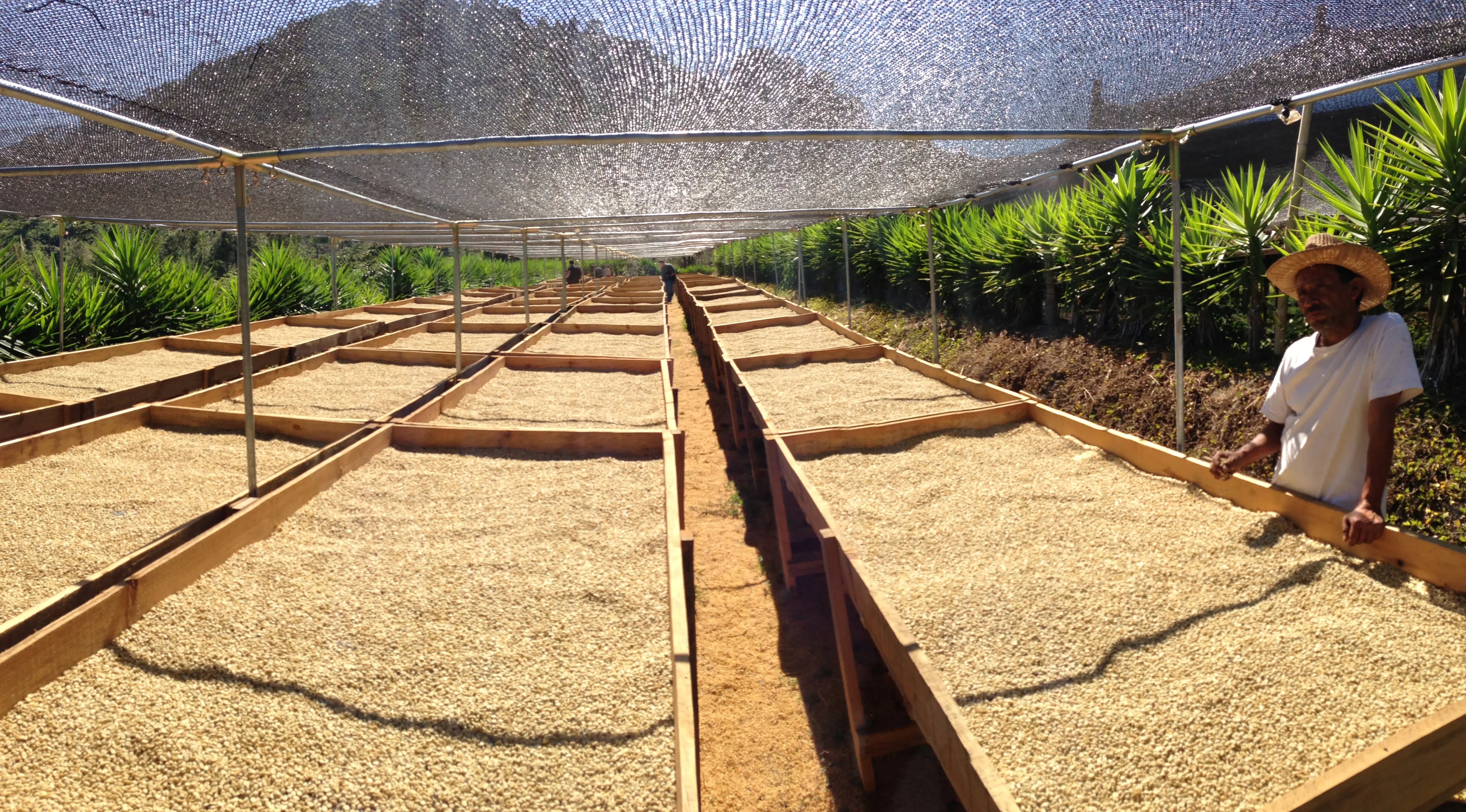
Raised Bed
Drying Coffee on Raised Beds
Historical Origin and Context
Drying coffee on raised beds, also known as "African beds," is a method pioneered in East Africa, notably Ethiopia and Kenya, over a century ago. The technique emerged as an effective alternative to traditional patio drying, largely driven by the need to improve drying efficiency and protect beans from contamination and spoilage. Over recent decades, raised beds have become a hallmark of specialty coffee producers worldwide due to their effectiveness in preserving bean integrity and quality.
How the Process Works
The raised bed drying method involves spreading freshly processed coffee beans—either washed, honey-processed, or natural—thinly across elevated mesh or wooden-framed beds, typically made from wire mesh or nylon netting stretched over wooden or metal frames. These structures allow airflow underneath and around the coffee beans, facilitating even and consistent drying.
During drying, coffee beans are routinely turned, sometimes hourly, to ensure uniform moisture reduction and to prevent mold, fermentation pockets, or uneven drying spots. Beans are typically dried for anywhere between 10 and 20 days, depending on climatic conditions, initial moisture levels, bean density, and desired cup profile. Coverings such as plastic or fabric sheets are often placed over the beds during midday sun or nighttime humidity to control the drying pace and prevent sudden moisture fluctuations.
Impact on Coffee Flavor and Quality
Raised-bed drying significantly influences coffee quality and flavor clarity. By enabling steady airflow and consistent drying conditions, raised beds minimize the risk of uneven drying, fermentation defects, and mold growth. This method typically results in coffees with enhanced clarity, more pronounced acidity, and cleaner flavor profiles.
Coffees dried on raised beds are celebrated for their vibrant, fruity, and floral notes. The prolonged and uniform drying process helps preserve complex sugars and aromatic compounds that might otherwise dissipate rapidly with mechanical or patio drying methods. Thus, raised-bed coffees are frequently featured in specialty-grade offerings due to their brighter, more nuanced profiles and consistency from harvest to harvest.
Common Defects and Challenges
Despite its advantages, raised-bed drying has certain inherent challenges. It demands significant manual labor due to the frequent turning required to prevent uneven moisture content. Moreover, improper bed management—such as overly thick layers of beans, poor airflow, or inadequate turning—can result in uneven drying and defects such as mold, phenolic flavors, or excessive fermentation.
Additionally, raised beds require careful management of drying time. Beans dried too quickly under intense sunlight may become brittle or lose critical aromatic complexity. Conversely, beans dried too slowly due to inadequate airflow or excessive humidity may develop off-flavors or spoil entirely.
Global Adoption and Significance
Raised-bed drying has become widespread in specialty coffee production, particularly in Africa, Central America, and increasingly throughout Asia and South America. Its adoption aligns closely with specialty market demands for high-quality, traceable, and meticulously processed coffees. While traditional patio drying or mechanical drying methods remain common globally—particularly for bulk commodity coffee—raised beds have carved out a significant niche in the specialty sector, highly favored by producers seeking premium market positioning.
The method now symbolizes attention to detail, meticulous care, and craft-oriented processing. Producers who implement raised-bed drying often attract premium prices and establish strong, lasting relationships with specialty buyers and roasters who value consistency and quality.
Raised beds have fundamentally reshaped how quality coffee is processed and marketed. This method's rise illustrates a global shift toward precision agriculture, transparency, and artisanal craftsmanship in coffee production. As demand for specialty coffee continues to grow, raised-bed drying will likely expand further, particularly as producers seek to enhance bean quality, sustainability, and market competitiveness.
Shop Raised Bed-Dried Coffees
-
 Sold out
Sold outKenya Kamoini
Regular price From $24.00 USDRegular priceUnit price / per -
 Sold out
Sold outEthiopia Guji Decaf
Regular price From $22.00 USDRegular priceUnit price / per -
 Sold out
Sold outKenya Nyeri Gichichi
Regular price From $20.00 USDRegular priceUnit price / per -
 Sold out
Sold outEthiopia Suke Quto
Regular price From $20.00 USDRegular priceUnit price / per




